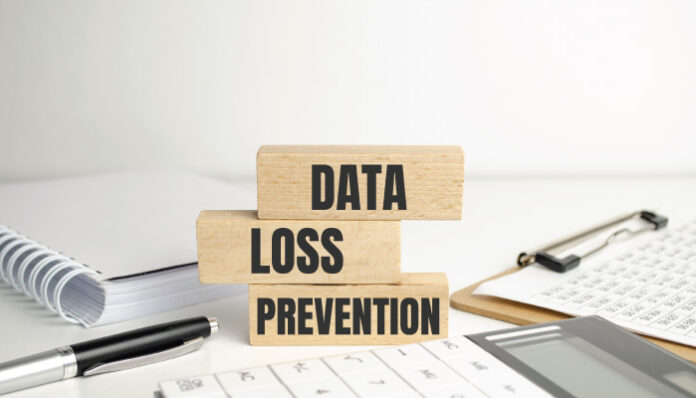While legacy DLP protects data, it is not adequately protecting the fastest-growing threat vectors and increasingly complex endpoints.
Cybercriminals are constantly looking for new attack vectors to exploit as virtual workforces grow. The greatest strength that businesses need today is an interesting flaw of legacy DLP: treating every machine and human identity as a new security perimeter.
Legacy data loss prevention (DLP) contributes to an increase in security threats and breaches. Responsible for a rising rate of endpoint attacks and malicious insider attacks that sometimes happen accidentally, legacy DLP is a liability. Additionally, due to the limitations of legacy DLP, many files, cloud workloads, software-as-a-service (SaaS) applications, and code repositories used by enterprise tech stacks rely on endpoints to authenticate them.
Employees are working across a wider range of networks from more locations than ever before due to hybrid and remote workforces.
Legacy data loss prevention does protect data, but it falls short in protecting the endpoints that are becoming more complex and the threat vectors that are growing the fastest. Businesses are investing tens of billions in DLP. Unfortunately, a lot of businesses do not experience the ROI they had hoped for from DLP solutions.
Why DLP isn’t evolving to meet the needs of businesses
Due to a lack of innovation and the inability of legacy tools to keep their promise of preventing breaches, data loss prevention has suffered. The endpoint has also taken center stage in terms of how data is accessed, used, shared, and stored.
The inability of DLP and cloud access security broker (CASB) solutions to fully support an organization’s security requirements, including zero trust, has caused frustration among businesses. DLP and CASB were frequently first purchased to regulate user access to data and satisfy compliance requirements.
Unfortunately, DLP systems have a bad rep for being overly challenging to set up and maintain while also failing to provide additional security across the tech stack. They are also known for setting off erroneous alarms. Finding professionals with experience in legacy DLP is difficult due to the persistent labor shortage that is affecting the cybersecurity industry.
The limitations of legacy DLP begin at the endpoint
The data protection market has seen very little innovation over the years, despite the rising risk to data posed by endpoints. Nearly every customer mentions how difficult it is to work with DLP’s shortcomings, which start with its reliance on a complicated set of pre-configured rules and behavioral parameters. The main flaw in legacy data loss prevention is that they were made to protect data, not the identity of the users, first.
It is impossible to detect insider threats such as misuse of privileged access credentials, attempts at social engineering, and deliberate and unintentional system sabotage by designing a system that is only concerned with protecting data.
Legacy DLPs are used by malicious administrators and privileged users to get around and occasionally disable pre-configured rules and logic. Accordingly, the main cause of breaches is frequently innocent administrators who make mistakes when configuring intricate legacy DLP systems. The likelihood of an error increases as CISOs and their teams work to protect more intricate cloud configurations with DLP.
Improving DLP with zero trust
Zero-trust network access (ZTNA), which enables least privileged access to the data, device, and identity levels, must be built into the platform’s core for data loss prevention to continue to advance. For proper data loss prevention, forcing traffic through a central location is a given. It still does not provide protection against intentional and unintentional breaches, though.
Endpoint management must adopt ZTNA along with least-privileged access for data, devices, and identities in order to overcome DLP’s drawbacks. The protection of data going to and coming from the endpoint is another design objective.
Also Read: Identity is the Brand-New Perimeter in a Hybrid Work Paradigm
Data classification is key to getting zero trust right
The ability to automate and orchestrate, but with the proper context for more accurate response, is another fundamental tenet of zero trust. Therefore, it is necessary to develop and enforce the key components of data security (such as data classification and policy enforcement at all locations) dynamically. Modern attacks cannot be countered by the outdated strategy of manually tagging data and routinely updating policy rules. To keep endpoints secure, policy rules for legacy data loss prevention must frequently be updated, which requires a lot of manual work.
Enterprises will continue to be compelled to replace legacy DLP systems as a result of the implementation of zero-trust frameworks. Any organization is liable for its limitations.
Look for current DLP solutions that offer content inspection, data lineage for improved classification and visibility, and incident response on a zero-trust-enabled platform when comparing them to other options. A well-defined data classification technology is at the core of a zero-trust approach to DLP, helping to prioritize the most sensitive data and increasing the effectiveness of implementing a thorough ZTNA framework. Later on in the timeline of a zero-trust framework, a strong classification strategy will also assist with micro-segmentation.
For more such updates follow us on Google News ITsecuritywire News. Please subscribe to our Newsletter for more updates.









